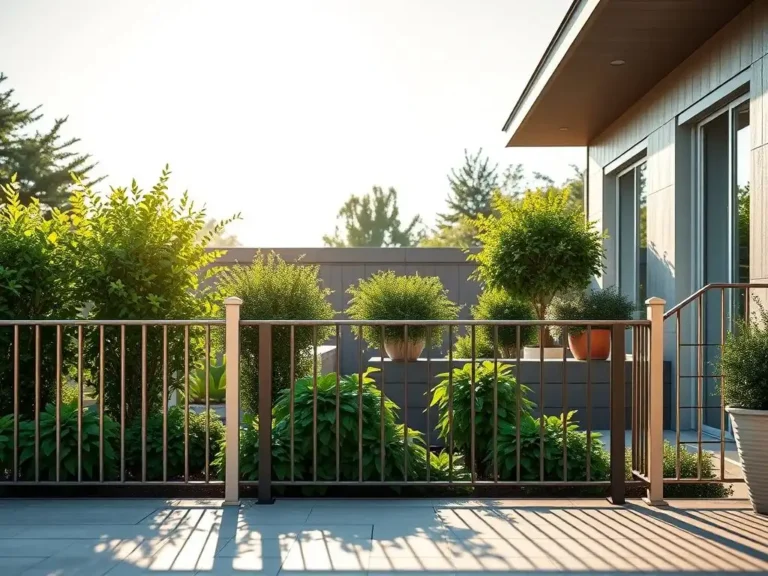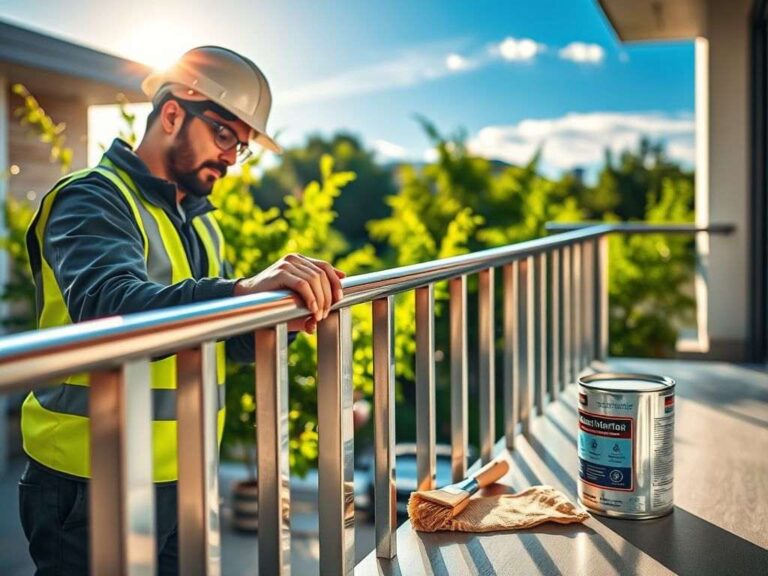How to Protect Aluminum Railings from Salt Corrosion?

Salt corrosion is a common problem for aluminum railings, especially near the coast or in areas with heavy road salt. This guide provides clear strategies to protect your railings, helping them last longer and stay strong. Following these tips will prevent corrosion and keep your railings in good shape.
Related products: aluminum deck railings
Understanding Salt Corrosion on Aluminum Railings
How Salt Affects Aluminum?
Aluminum doesn’t rust like iron, but it can corrode when exposed to salt. Salt from the air or water can break down aluminum’s protective oxide layer, causing it to corrode over time.
Sources of Salt Exposure
Salt exposure can come from different sources. Coastal areas face salt in the air. In colder climates, road salt can splash onto railings. Salt from pools can also speed up corrosion.
Why Aluminum Corrodes?
Aluminum is naturally resistant to corrosion due to its oxide layer. However, salt and moisture can weaken this layer, allowing corrosion to start.
Challenges for Coastal Properties
Salt Air and Aluminum
Living near the coast brings salt air, humidity, and strong sunlight, all of which can damage aluminum railings. The salt in the air builds up on railings, weakening them if left untreated.
How Salt Air Differs from Other Salt Exposure?
Salt air is a constant threat. It doesn’t just splash on railings like seawater or road salt—it settles on surfaces every day. This makes cleaning and maintenance even more important in coastal areas.
Choosing the Right Aluminum for Salt Exposure
Best Aluminum Alloys for Salt Resistance
Not all aluminum is the same. For coastal areas or places with road salt, the 5000-series (5052, 5083) and 6000-series (6063, 6005A) alloys are ideal. These alloys resist corrosion better in salt-rich environments.
The Role of Aluminum Grades
Aluminum grades vary in resistance to corrosion based on the metals mixed with the aluminum. Choosing the right alloy ensures better protection against salt damage.
Protective Coatings for Aluminum Railings
Powder Coating: The First Line of Defense
Powder coating adds a strong, durable layer that helps protect railings from salt corrosion. This coating resists chipping, scratching, and UV damage, making it perfect for areas with salt exposure.
Anodizing: Additional Protection
Anodizing aluminum increases its oxide layer, making the metal harder and more resistant to corrosion. It’s especially effective in coastal environments.
Advanced Coatings for Harsh Conditions
In extreme salt exposure, advanced coatings can offer additional protection. Some coatings combine epoxy primers and high-quality powder coatings for better results.
Installation Tips to Prevent Corrosion
Avoiding Galvanic Corrosion
Galvanic corrosion happens when two different metals come into contact in saltwater. To prevent this, use compatible materials for fasteners, such as stainless steel, instead of steel, to avoid corrosion at connection points.
Design Tips for Better Salt Protection
Design railings with fewer flat surfaces to reduce salt buildup. Make sure the design allows for water drainage and airflow, which helps the railings dry quickly after rain or salt spray.
Regular Maintenance to Prevent Salt Damage
Cleaning Frequency
If you live near the coast, clean your railings every three months. After storms or during winter (when road salt is common), clean more often to remove salt buildup.
Choosing the Right Cleaning Products
Use a mild soap and water solution to clean aluminum. Avoid harsh chemicals that might damage the protective coating. For stubborn corrosion, use specialized aluminum cleaners.
Cleaning Steps for Salt-Affected Railings
- Rinse railings with fresh water to remove loose salt.
- Apply mild detergent with a soft cloth.
- Scrub areas with visible salt deposits.
- Rinse thoroughly with fresh water.
- Apply a protective coating if needed.
- Dry the railings completely to prevent moisture buildup.
Read more: Complete Guide to Aluminum Railings Maintenance and Repairs
Handling Existing Corrosion
Signs of Salt Corrosion
Look for white spots or streaks, especially where different metals meet. More serious corrosion may cause small holes or pitting.
Fixing Corrosion
Minor corrosion can be cleaned with aluminum cleaner. For more severe damage, scrub the area and apply a protective coating to prevent further issues.
When to Replace or Repair
If corrosion has caused significant damage or weakened the structure, replacement might be necessary. Regular inspections help you determine when the repair isn’t enough.
Seasonal Protection Tips
Winter Care for Areas with Road Salt
Before winter, apply a protective coating to help shield railings from road salt. During winter, clean your railings more often to remove salt that may have accumulated.
Summer Care for Coastal Properties
Salt spray and high humidity can be tough on aluminum railings during the summer. Increase cleaning frequency and inspect the coating for signs of wear.
Protecting Railings During Storms
During storms, salt exposure can increase. If possible, rinse the railings after major storms to remove salt deposits before they can cause damage.
Long-Term Maintenance Planning
Creating a Maintenance Schedule
Tailor your maintenance routine to your location. Coastal properties may need monthly checks, while areas with road salt might only need seasonal cleaning.
Combining Protection Methods
For maximum protection, combine different methods: use the right aluminum alloy, apply coatings, and follow a regular maintenance routine.
Conclusion
Preventing salt corrosion on aluminum railings requires the right materials, coatings, and maintenance. By choosing the right alloys, applying protective coatings, and cleaning regularly, your railings will stay in good condition for years. Whether you live near the beach or in an area with road salt, taking these steps will help protect your investment and maintain your railings’ appearance and strength.






